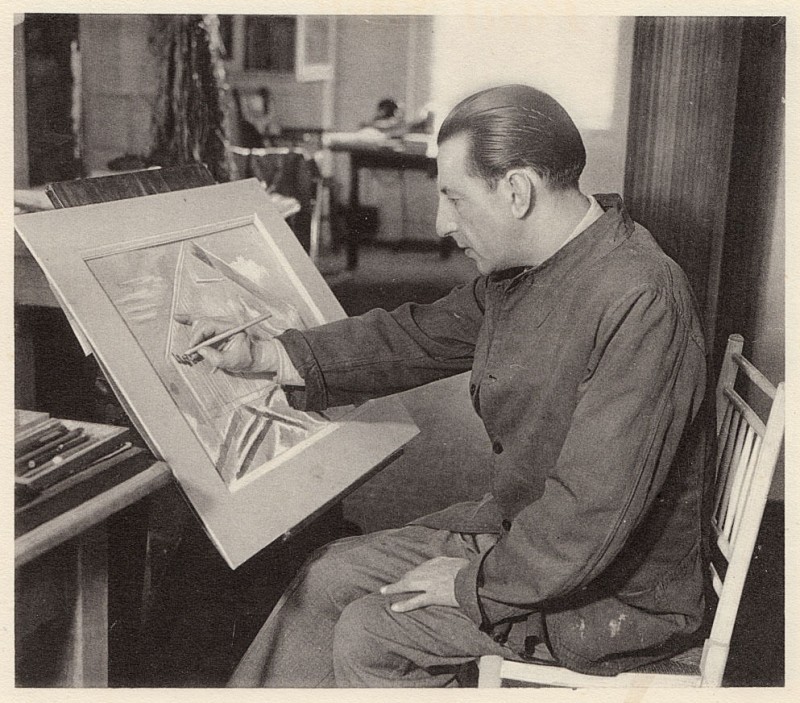Born in London, the son of William Henry Nash, he studied art at the Slade School between 1910 and 1911. He painted landscapes in oils, watercolours and gouache and his first one man show at the Carfax Gallery in 1912 revealed the influence of Samuel Palmer. Before the First World War he was briefly associated with Roger Fry's Omega Workshops. During the War, he served with the Artists' Rifles and worked as an official war artist. His subsequent oil paintings of War-wrecked landscapes were forceful records of 'those wastes in Flanders' as he described them. After the War he continued to exhibit at the London Group and began making wood engravings. Nash's carefully worked landscapes in oils, watercolours and wood engravings reveal the influence of Cézanne and Derain. However, his disciplined and ordered pictures provoked Athenaeum to write in October 1920: "There is always a danger with Mr. Paul Nash that by the time he has constructed his ingenious simplifications something essential to his first conception has evaporated. But more probably the truth is that Mr Paul Nash is fantasist rather than an artist of passion." During the 1920s he had begun to use surreal elements in his work. At this period he also began taking photographs of the landscape and they were used for the basis of his paintings. After a visit to Avebury in 1933 he became deeply interested in the prehistoric megaliths. Also in that year he was the chief organiser of Unit One with Henry Moore, Barbara Hepworth, Ben Nicholson, Edward Burra and Edward Wadsworth. In 1936 he helped to organise the International Surrealist Exhibition staged in London. His paintings during the 1930s were sometimes semi-abstract and surrealist tendencies were strongly evident. However, he remained essentially a painter of the English landscape and his central concern was always to evoke a sense of place.
